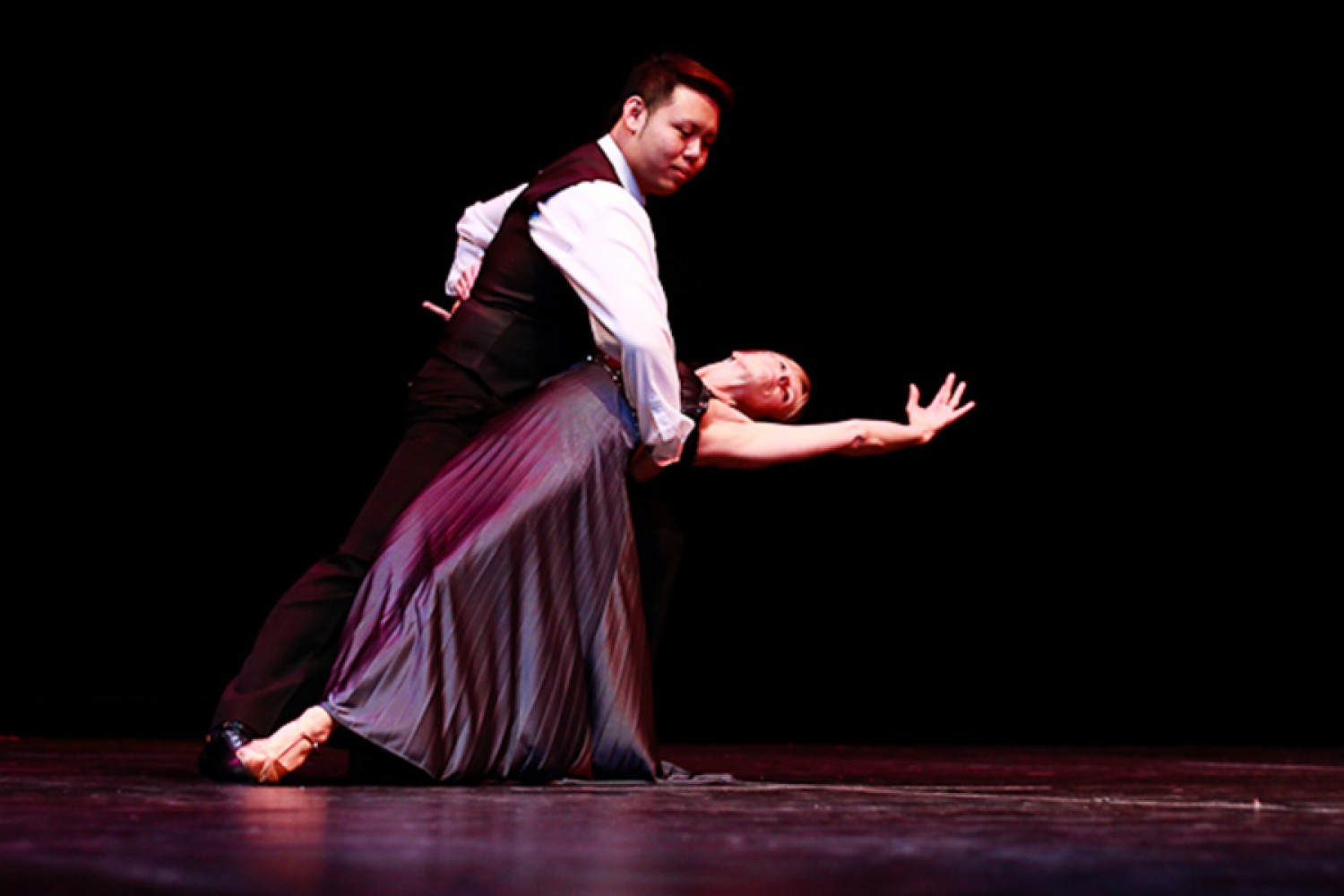The Beginner’s Guide to Waltz Dancing

Fun as salsa dancing is, sometimes we want to move to something that won’t leave us panting and sweaty by the end. Enter waltz dancing, with it’s slow, romantic, graceful movements… Well, you’ll get there.
While many dance studios specialize in nightclub style dances like the salsa, waltz dancing is embraced as part of the larger “ballroom” umbrella. That means waltz, the other dances we’ll be covering, and many more are taught in the same place, and they are usually all danced at the socials too. Not bad, if you like being spoiled for choice.
Waltz dancing is classy – leave the muscle shirts and micro-skirts at home. While the usual rules for wearing fitted, breathable clothing apply, aim for more of a business casual or smart look: dress pants and a nice shirt for men, and a longer skirt or a simple dress for women for example.
That said, I would keep that long necklace and giant earrings in your jewelry box – classy isn’t worth risking getting some part of you getting caught on some part of your partner. Also, heel-haters can breath a sigh of relief: Waltz dancing uses shorter heels, only about an inch for men and an inch-and-a-half for women.
Did you find the studio okay? As you step into class, be prepared for a lot of box-y movements. Especially at the beginner level, waltz dancing involves a lot of forward-side-together-back-side-together, often while turning one way or another. It might seem a bit repetitive, but don’t worry – this is just laying the groundwork.
Are you waiting for the quicks and slows? Don’t worry – there aren’t any. Waltz dancing follows a “1-2-3” count, with most beginner patterns lasting 2 counts of “1-2-3”. You might want to count them out to start, as it’s easy to forget to launching into the next pattern without finishing the previous one.
As you probably guessed within the first half of class, this dance travels. Waltz dancing, like many ballroom styles, generally moves around the floor in a counterclockwise fashion. That may not matter so much right now, but keep it in mind when preparing for your first social!
Speaking of socials, best to dance on the “inner track”, closer to the centre of the room to start. This is where beginners can practice, without being tailgated by more experienced dancers. The closer you move to the outer edge, the faster the dance tends to move.
Hey, this isn’t salsa remember? No hips! Waltz dancing keeps the midsection very still, using smooth, controlled movements rather than rhythmical ones. Also, you might notice your instructor periodically rise up on the balls of their feet when explaining something. This is called rise and fall – don’t worry, you’ll explore that more in future lessons.
Currently, beginner waltz classes are taught by Arpad Raymond at noon on Fridays, and I’ll be covering the fundamentals at noon on Wednesdays, starting in December. You can check us out by going here and clicking “Ballroom Basics”.
Waltz dancing is beautiful and flow-y, but might seem a bit stiff for some. Let’s bring those Latin hips back next week with the sensual rumba!
About the Author
Ian Crewe has been dancing ballroom for over 18 years, and has a Licentiate in American smooth and rhythm. His passion for dance eventually led him to blogging and the World Wide Web. Ian currently teaches at the Joy of Dance Centre, Toronto, ON, Canada.

